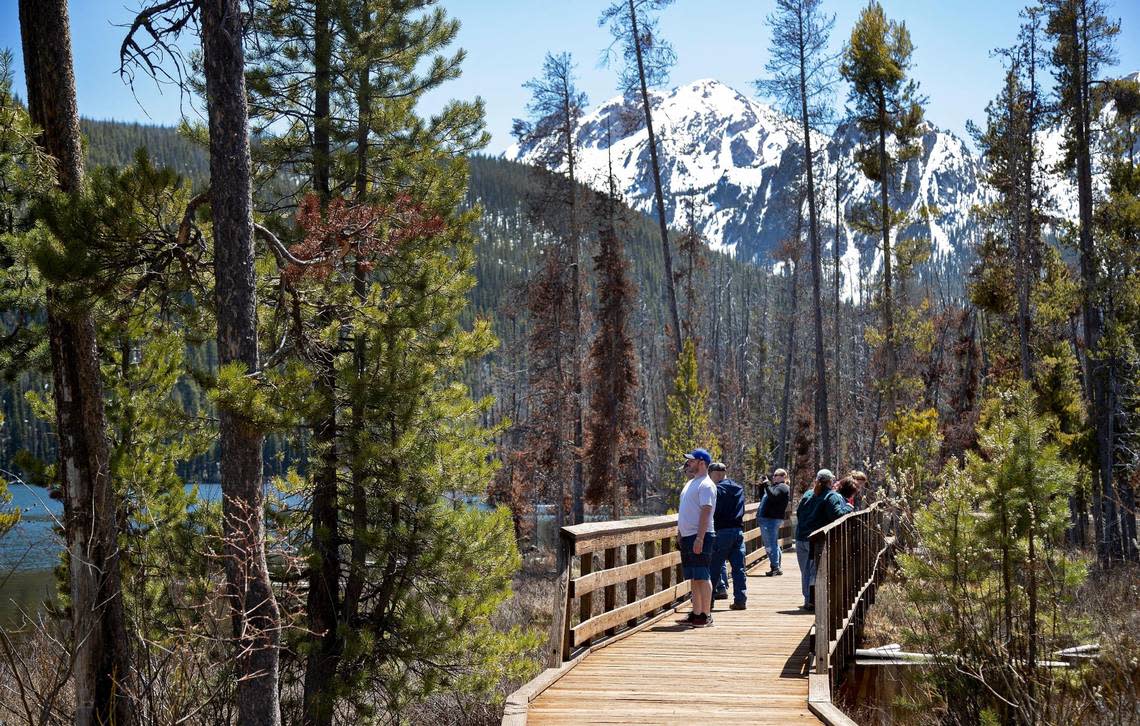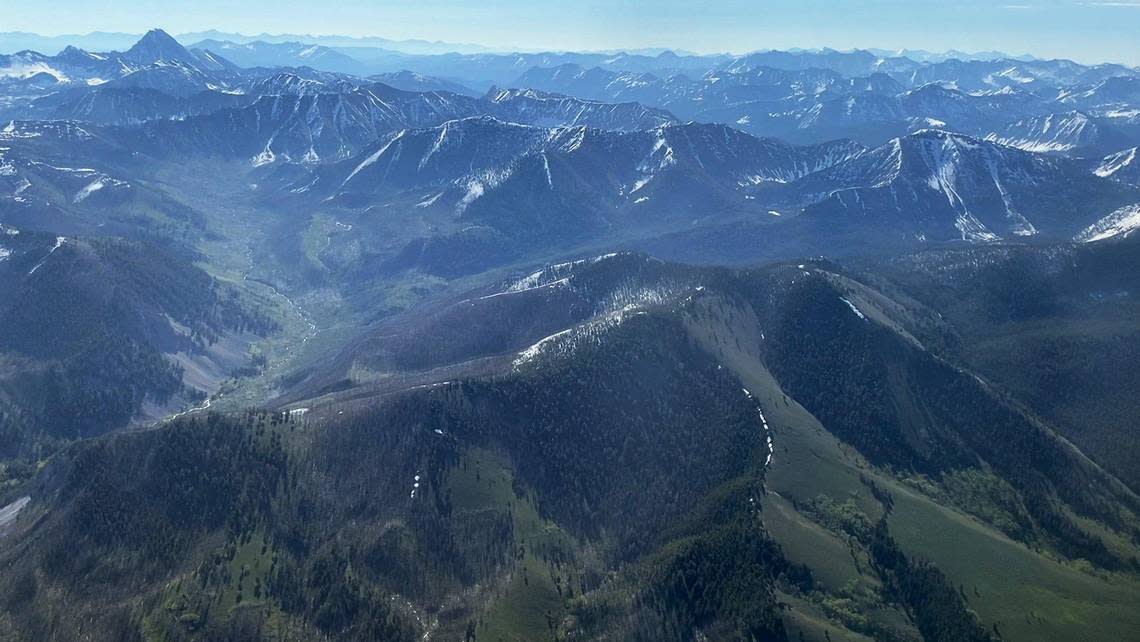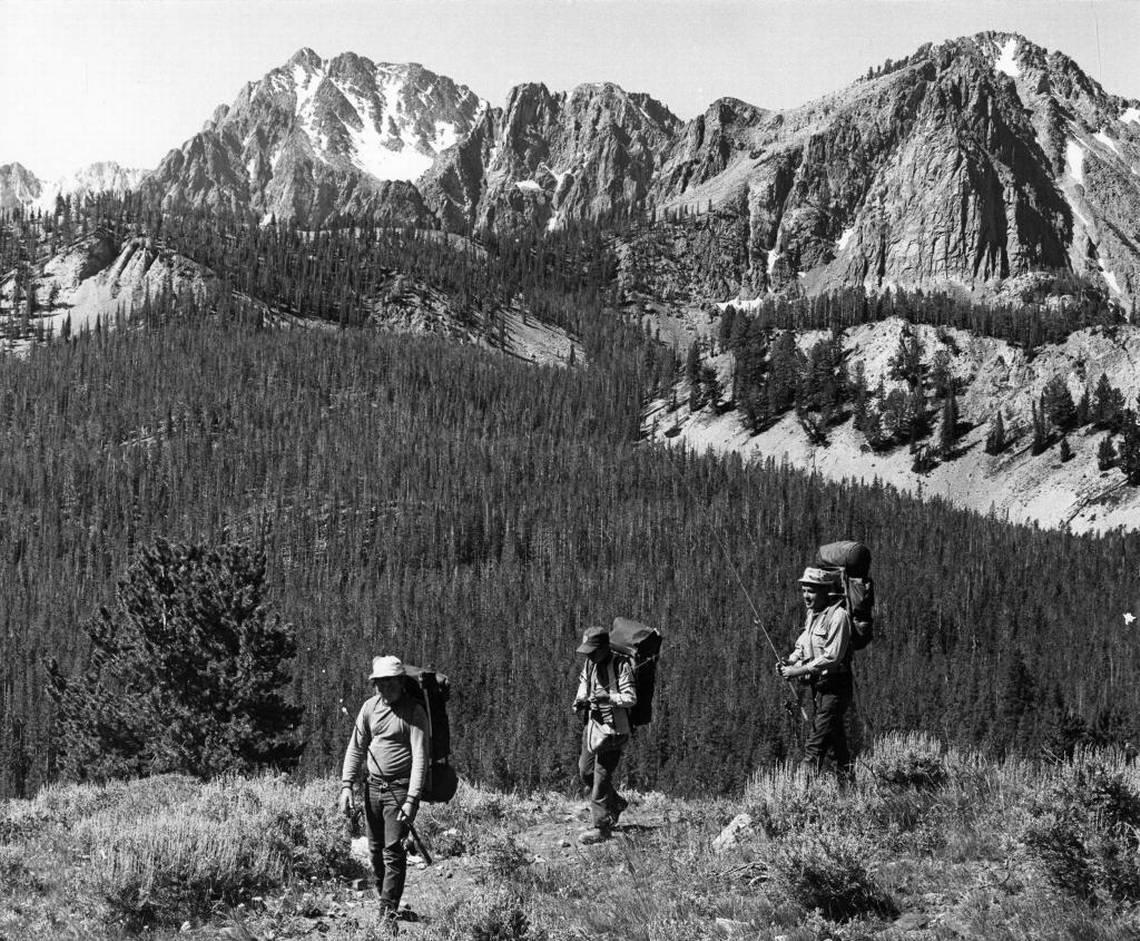What’s a national recreation area? Here’s how the Sawtooths fit into the U.S. system
For nearly 60 years throughout the 20th century, there was a constant tug of war in Idaho over a vast swath of land in Central Idaho, including the Sawtooth Range.
The fight? Whether the Sawtooths and surrounding wilderness should be turned into a national recreation area or national park, or left to the mercy of big corporations who’d take advantage of the region’s natural resources.
In August 1972, 59 years after national park legislation was first introduced, the Sawtooth National Recreation Area was established after years of work from U.S. Sen. Frank Church.
But even Church, born in Boise and considered a champion of protecting wilderness areas, could not push through legislation to make the Sawtooths a national park. Fifty years later, the Sawtooths remain a national recreation area, spanning approximately 756,000 acres of mountainous wilderness in Central Idaho.

But what is a national recreation area, and why have the Sawtooths never been upgraded to a national park?
“A national recreation area is a protected area established by typically an act of Congress,” Sawtooth NRA public affairs officer Elizabeth Wharton told the Idaho Statesman. “And the purpose of it is to preserve enhanced recreational opportunities and these areas that have significant natural and scenic resources.”
National recreation areas are also typically managed by one of three agencies — the U.S. Forest Service, Bureau of Land Management or National Park Service — while the National Park Service solely governs national parks, Wharton said.
Idaho’s battle to preserve the Sawtooths
The mission to establish a national park in the Sawtooths began in the 1910s at the peak of the See America First movement, which encouraged Americans to look inward toward their own country’s beauty for vacations rather than going abroad.
By 1915, the Sawtooths were being described as “The Switzerland of America” at the 1915 World’s Fair in San Francisco, according to a paper by Weber State professor of history Sara Dant. In the mid-1920s, promoter Robert Limbert said that he saw Hailey as “the St. Moritz of America,” referencing the Swiss alpine resort town on the slopes of the Alps.

Efforts to turn the Sawtooths into a national park fluctuated in and out of Idahoan consciousness during the 20th century. An attempt by U.S. Sen. James Pope in the 1930s was struck down by Boise Valley irrigators who feared the park would close off future dam and water storage sites, according to Dant. Church also had several failed attempts due to opposition from mining, ranching and timber associations.
The final factor that led to the Sawtooths being designated as a national recreation area, according to Dant, was a proposal from the New York-based American Smelting and Refining Company in 1968. ASARCO planned to establish an open-pit mine at the base of Castle Peak in the White Clouds, a range adjacent to the Sawtooths.
Church, along with fellow U.S. Sen. Len Jordan, quickly moved to amend their national recreation bill to include the threatened peaks. The bill was passed by Congress in 1972, and the Sawtooth National Recreation Area became official later that year.
“Two instrumental factors that helped build momentum around the passage of the legislation that created the Sawtooth NRA were the development of subdivisions within the Sawtooth Valley and the proposal of a large mine at the base of Castle Peak, which is now within the Cecil D. Andrus White Clouds Wilderness area,” Sawtooth NRA ranger Kirk Flannigan told the Statesman.

How does an NRA differ from a national park?
Outside of the 1% slice of Yellowstone National Park in eastern Idaho, the Gem State is still without a national park of its own.
“If we begin with the recreation area, we might eventually have a park,” Church said in 1967, according to Dant. “But if we go back to the park proposal now, we might never have even the recreation area.”
Church’s dream is still yet to be realized, but a national recreation area ultimately offers more recreational opportunities than a national park.
Some of the main differences are that a national recreation area allows hunting and trapping as opposed to most national parks. Sawtooth NRA offers small game, big game and bird hunting across seven different areas. Many national parks also have tighter restrictions on boating and other water activities, while boating, swimming, tubing, waterskiing and windsurfing are all allowed in the Sawtooth NRA.
A complete list of recreational opportunities can be found on Sawtooth NRA’s website, including fishing, horseback riding and camping.
National parks are also primarily designated for nature preservation and must possess “nationally significant natural, cultural or recreational resources,” according to Wharton. Meanwhile, a national recreation area has more flexibility to serve multiple goals rather than just preservation.
“NRAs can be managed for multifaceted objectives,” Wharton said. “This may include management for recreation, wildlife habitat, watershed restoration and limited ecological diversification.”
The Sawtooth NRA has been home to the Wood River Watershed Restoration Project in Blaine County and land and resource management plans that included vegetation treatment, bird monitoring and meeting with tribal representatives to coordinate the use of national forest land.
A band of the Shoshone Indian tribe called the Sheepeaters once lived in the Sawtooth Valley before being chased out and relocated to the Fort Hall Indian Reservation in the late 1800s.
Other famous NRAs
By area, the Sawtooth NRA is the fourth-largest NRA in the country. Below are four other NRAs that match Sawtooth in size and grandeur:
Lake Mead, Nevada/Arizona: Spanning approximately 1.5 million acres, Lake Mead became the first NRA in the country in 1947. With more than 750 miles of shoreline, Lake Mead offers boating and camping opportunities and views of the Hoover Dam on the Colorado River.
Glen Canyon, Arizona/Utah: The Glen Canyon NRA spans 1.25 million acres and is home to famous American landmarks like Horseshoe Bend and the Rainbow Bridge National Monument.
White Mountains, Alaska: Located just an hour’s drive from Fairbanks, White Mountains was established in 1980 and is approximately 1 million acres in size. Wintertime visitors traverse the 250 miles of trails using skis, snowshoes, dog teams and snowmobiles.
Hells Canyon, Idaho: Slightly smaller than Sawtooth at approximately 661,000 acres, Hells Canyon is another jewel of Idaho. Located on the Idaho-Oregon border, Hells Canyon features North America’s deepest river gorge and offers whitewater rafting, jet boating and fishing opportunities along the Snake River.
